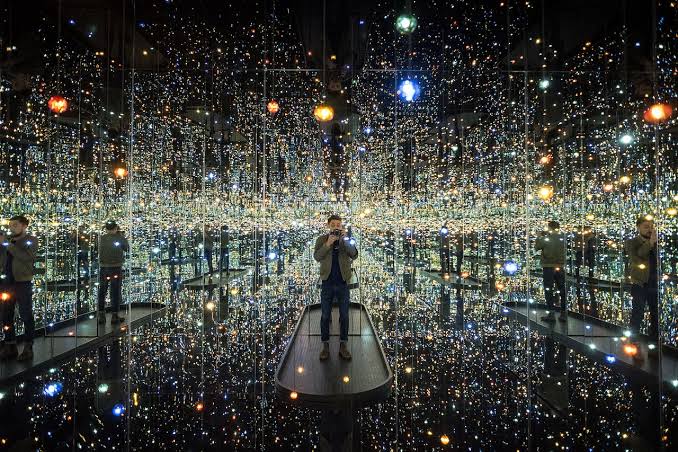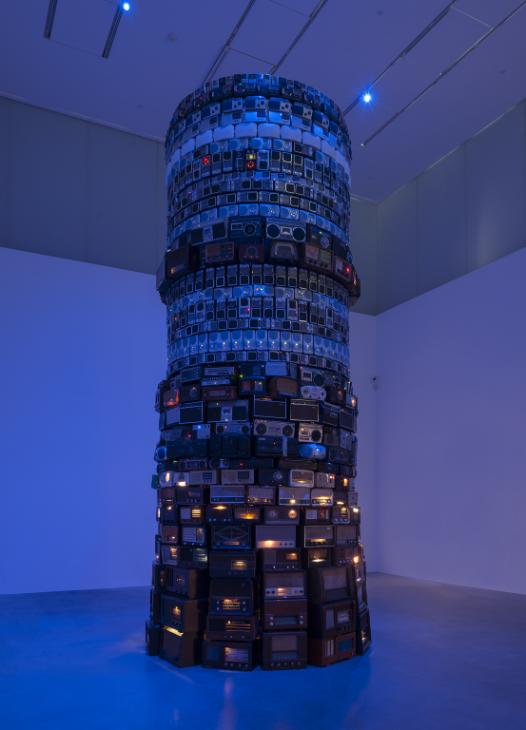Installation art is a 3 dimensional visual artwork, often created for a specific place and designed to change the perception of that space. The term “installation” which appeared in 1970s, generally applies to works created for interior spaces (i.e gallery, museum); outdoor works are often referred to as Public art or Land art. That being said, an outdoor piece can most certainly be considered an “installation” of some sort, but, typically installation art is most often found within an indoor space as some artists would prefer to contain their creative work to the context of a room which is simple enough for a viewer to comprehend.
The origins and roots of installation art are often associated with conceptual art, tracing the steps all the way back to artist Marcel Duchamp and his innovative approach of presenting his readymades, specifically the controversial urinal piece called ‘Fountain’ from 1917. Conceptual art refers to an area of art where the artist places a greater importance on exploring an idea or concept than the artwork itself.
Installation art can comprise traditional and non-traditional media such as painting, sculpture, readymades, found objects, drawing and text. It requires the engagement of the viewer with the art work, which may involve the viewer entering into the space of the artwork and interacting with the artwork from multiple perspectives. It may engage many and all of our sense organs- touch, sound and smell rather than just visual or optical sense.
Installation art may involve the incorporation of the site or space of display into the artwork. In some instances, the site or location of the work is an intrinsic and non-negotiable element of the work. To move the work or recreate it in another site would constitute the destruction of the existing work and creation of a new work, which may contravene the artist’s intentions. This type of installation art is called Site-specific Art, where the creation of the artwork relates to, and is contigent on a specific site. Many artists who create installation art impose conditions and provide detailed instruction with regard to the installation of the artwork, such as indicating where and how it can be installed, what material can be used and whether it can be reinstalled in the same or any other site. While the site is a central component of installation art, in some instances it may not be particular to the art work; therefore the artwork can be configured and reassembled in other similar sites or space, subject to the conditions of the artist.
Installation art has evolved since the late 20th century and several men and women can be credited for the art movement’s growth and rise in popularity. Here are four notable installation artists:
Ai Weiwei: The Chinese contemporary artist is known for his installation pieces as well as architecture and design. He’s also a political activist who has used art as a platform to speak out against oppressive regimes. His installations include1001 Chairs, Sunflower seeds and Forever Bicycles.
.jpeg)
Forever bicycle
Allan Kaprow: The American artist unveiled Yard in 1961, ushering in a new era in contemporary art. In Yard, the artist filled the outdoor backyard of New York’s Martha Jackson Gallery with tires and crudely made forms, then invited participants to explore the heap.
Damien Hirst: The concept of death is central to the British artist, who gained fame in the 1990s. He is known for a series of works that display preserved or dissected dead animals in large display tanks.

Yayoi Kusama: The Japanese contemporary artist is well known for her extensive and iconic exhibitions and permanent installations featuring bold patterns and polka dots. Notable exhibitions include; Infinity Mirror Room- Phalli’s Field, Life is the Heart of the Rainbow and a series of Mirror rooms.
.jpeg) Infinity mirror room
Infinity mirror room
.jpeg)
One other notable installation artist is Cildo Meireles. My favorite work of his is named 'Babel' - a tower of turned on radios.

What makes installation art different from sculpture or other traditional art forms is that, it is a complete unified experience rather than a display of separate, individual artworks. The focus on how the viewer experiences the work and the desire to provide an intense experience for them is a dominant theme in installation art.
I hope you enjoy this write up. Please do well to encourage me with your up votes. 💗❤️💝